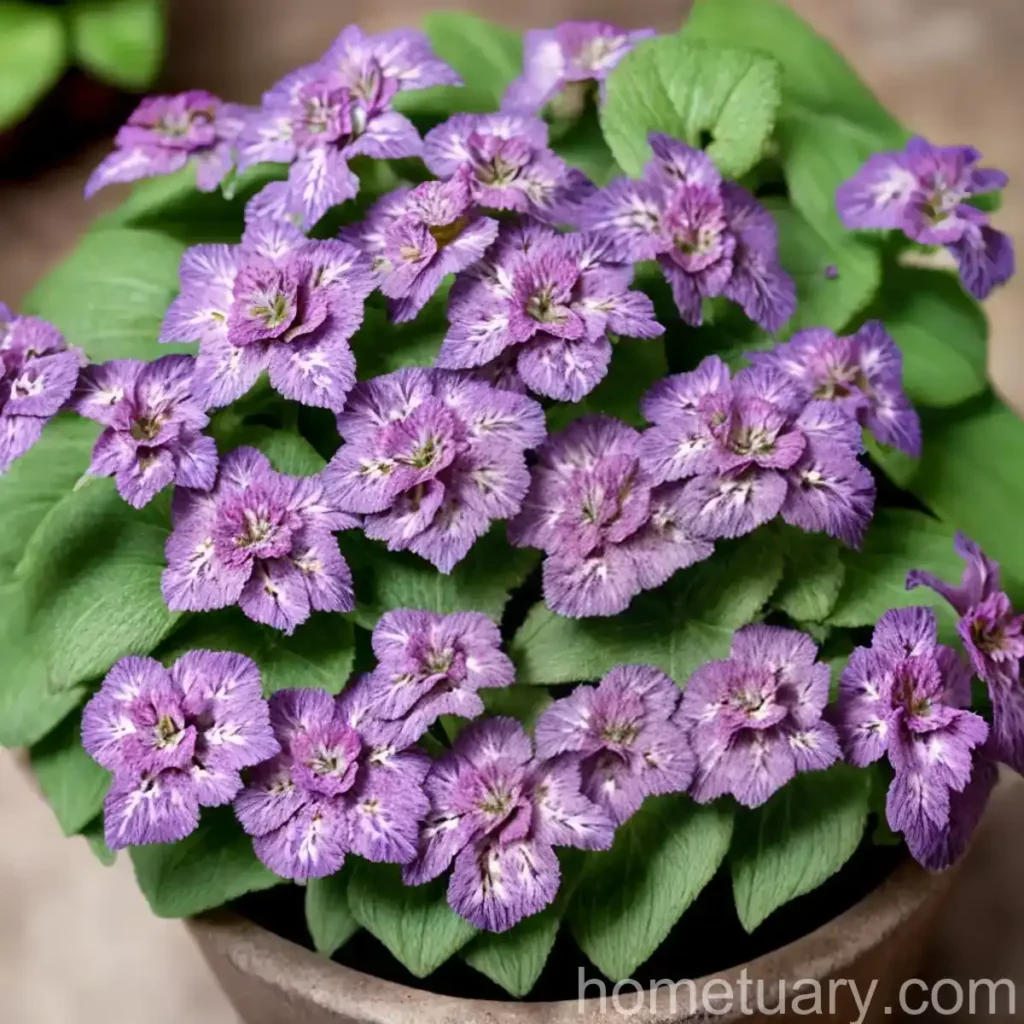The Common Lungwort (Pulmonaria officinalis): A Comprehensive Guide
Plants are fascinating organisms that have been a part of human lives for thousands of years. They come in all shapes, sizes, and colors, and each species has its own unique characteristics and uses. In this guide, we will explore the common lungwort (Pulmonaria officinalis), a plant with a rich history and a wide range of cultural, medicinal, and horticultural uses. We will delve into the plant’s culture, uses, care, propagation, common diseases, pests, and much more.
What is common lungwort (Pulmonaria officinalis)?
Common lungwort (Pulmonaria officinalis) is a perennial herbaceous plant belonging to the Boraginaceae family. It is native to Europe and Western Asia and is known for its distinctive foliage and clusters of colorful flowers. This plant has been cultivated for centuries and is prized for its ornamental value as well as its medicinal properties.
Key Takeaways – Common Lungwort (Pulmonaria officinalis)
Here are some key takeaways about common lungwort (Pulmonaria officinalis):
- Scientific Name: Pulmonaria officinalis
- Common Names: Common lungwort, Our Lady’s milk drops, Jerusalem cowslip
- Family: Boraginaceae
- Native Habitat: Europe and Western Asia
- Cultural Uses: Ornamental plant, medicinal herb
- Flowering Period: Early spring
- Foliage: Variegated leaves with silver spots
- Flower Color: Pink, purple, or blue
Now that we have an overview of common lungwort, let’s dive deeper into its cultivation, uses, and care requirements.
Culture
Cultivating common lungwort requires an understanding of its specific requirements for water, sunlight, soil, and fertilizer. Let’s explore each of these aspects in detail.
Water
Common lungwort thrives in moderately moist soil. It is important to provide regular watering, especially during dry periods, to ensure that the plant’s root system remains hydrated. However, it is equally important to avoid overwatering, as this can lead to root rot and other problems. A well-draining soil that retains moisture without becoming waterlogged is ideal for growing common lungwort.
Sunlight
Common lungwort is well-adapted to shady conditions and is often grown as an understory plant in woodland gardens. It prefers partial to full shade, especially in regions with hot summers. In cooler climates, it can tolerate some morning sun, but it generally performs best in dappled shade or filtered light. Avoid planting common lungwort in areas with intense, direct sunlight, as this can scorch its delicate foliage.
Fertilizer
When it comes to fertilizing common lungwort, a light application of a balanced, organic fertilizer in early spring can help promote healthy growth and vibrant blooms. Avoid using excessive amounts of nitrogen, as this can encourage lush foliage at the expense of flowers. Instead, opt for a slow-release, low-nitrogen fertilizer that provides essential nutrients without overwhelming the plant.
Soil
Common lungwort prefers moist, well-draining soil with a slightly acidic to neutral pH. A rich, organic soil with ample organic matter is ideal for supporting the plant’s growth and enhancing its overall health. Additionally, incorporating a layer of mulch around the base of the plant can help retain soil moisture and protect the roots, especially during dry periods.
Pruning
Pruning common lungwort is relatively simple and primarily involves removing spent flowers and any damaged or unsightly foliage. This can be done throughout the growing season to encourage a neat and tidy appearance. Additionally, in late fall or early spring, it can be beneficial to cut back the entire plant to promote fresh new growth and maintain its vigor.
Propagation
Common lungwort can be propagated through division or by collecting and sowing the seeds. Dividing established clumps in early spring or fall is a reliable method for increasing the plant’s population. Similarly, collecting ripe seeds and sowing them in a prepared seedbed can yield new plants. Keep in mind that common lungwort may self-seed under favorable conditions, producing volunteer seedlings in the vicinity of the parent plants.
Container Popularity
Due to its shade tolerance and compact growth habit, common lungwort is well-suited for container gardening. It can be grown in pots, planters, or other suitable containers, providing an attractive addition to shaded patios, balconies, and outdoor living spaces. When growing common lungwort in containers, it is crucial to ensure adequate drainage and provide regular care to support its growth and well-being.
Common Diseases
As with any plant, common lungwort is susceptible to certain diseases that can affect its health and appearance. Being aware of these potential issues and taking preventive measures is essential for maintaining thriving plants. Some common diseases that may impact common lungwort include:
-
Powdery Mildew: This fungal disease can cause a powdery white coating on the leaves, leading to reduced photosynthesis and overall decline in plant health.
-
Leaf Spot: Various fungal and bacterial pathogens can cause leaf spot, resulting in brown or black spots on the foliage and potential defoliation if left untreated.
-
Root Rot: Overly wet conditions or poorly drained soil can lead to root rot, which can affect the plant’s ability to absorb water and nutrients, ultimately causing wilting and decline.
-
Rust: Rust diseases can cause orange, yellow, or brown pustules on the leaves, affecting their vitality and potentially spreading to nearby plants.
Disease Diagnosis
Proactive monitoring of common lungwort’s foliage, stems, and overall appearance can help with early disease detection. If any signs of disease or distress are observed, it is imperative to take prompt action to identify the issue and implement appropriate treatments. Regularly inspecting the plant for unusual symptoms, such as discoloration, spots, or unusual growth patterns, can aid in diagnosing potential diseases.
Common Pests
While common lungwort is relatively resistant to many pests, it may still encounter some common insect adversaries. Being aware of these potential pests and their impact on the plant can facilitate timely intervention and preventive measures. Some pests that may affect common lungwort include:
-
Aphids: These small, sap-sucking insects can cluster on the undersides of leaves, causing distortion and yellowing of the foliage.
-
Slugs and Snails: These voracious feeders can cause extensive damage to the tender leaves of common lungwort, especially in damp and shady environments.
-
Spider Mites: These tiny arachnids can infest the foliage, causing stippling, discoloration, and webbing, leading to diminished plant vigor.
Botanist’s Tips
Understanding the natural history and ecological preferences of common lungwort can provide valuable insights for its successful cultivation and conservation. Consider the following botanist’s tips for growing and appreciating common lungwort:
-
Companion Planting: Common lungwort can be strategically planted alongside other shade-loving perennials, such as hostas, ferns, and heucheras, to create visually appealing and ecologically functional garden beds.
-
Wildlife Habitat: Common lungwort’s nectar-rich flowers attract pollinators, such as bees and butterflies, making it a valuable addition to wildlife-friendly gardens.
-
Medicinal Properties: Historically, common lungwort has been used in herbal medicine to address respiratory ailments, owing to its purported expectorant and astringent properties.
-
Folklore and Symbolism: Common lungwort has been associated with various folklore beliefs and symbolisms, often linked to its colorful flowers and variegated foliage.
Fun Facts
To further appreciate the allure of common lungwort, here are some intriguing fun facts about this captivating plant:
-
Variegated Foliage: The distinctive silver-spotted leaves of common lungwort contribute to its visual appeal and have made it a sought-after ornamental plant.
-
Early Spring Bloomer: Common lungwort’s clusters of pink, purple, or blue flowers emerge early in the spring, providing much-needed nectar to early-awakening pollinators.
-
Color-Changing Flowers: The flowers of common lungwort transition in color over time, adding an element of visual interest as they progress from pink buds to blue blooms.
-
Herbal Uses: Traditionally, common lungwort has been used in herbal remedies for addressing respiratory issues, earning it a place in the repertoire of traditional medicine.
Links to External Resources
For further information on common lungwort (Pulmonaria officinalis), its cultivation, folklore, medicinal uses, and ecological significance, consider exploring the following external resources:
- Royal Horticultural Society – Pulmonaria
- Missouri Botanical Garden – Pulmonaria officinalis
- Plants for a Future – Pulmonaria officinalis
- North Carolina State University Extension – Lungworts as Landscape Plants
- The Herb Society of America – Pulmonaria officinalis
In conclusion, common lungwort (Pulmonaria officinalis) is a captivating plant with a rich tapestry of cultural, medicinal, and horticultural significance. Its variegated foliage, early spring blooms, and historical uses make it a valuable addition to diverse garden settings. By understanding its preferences and harnessing its potential, we can fully appreciate the enchanting allure of common lungwort. Whether grown for its ornamental charm or cherished for its medicinal heritage, common lungwort stands as a testament to the enduring relationship between humans and the plant kingdom.















